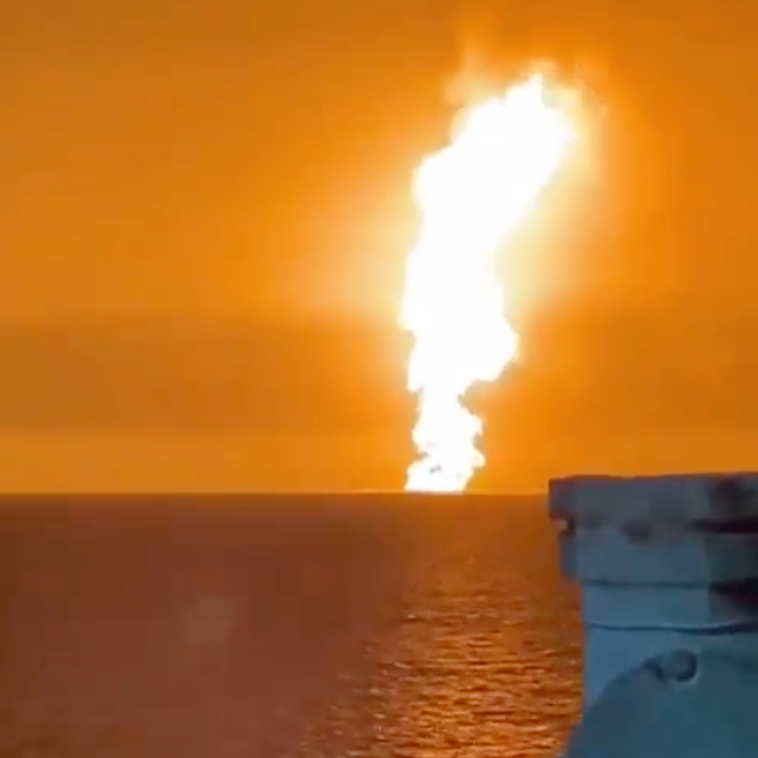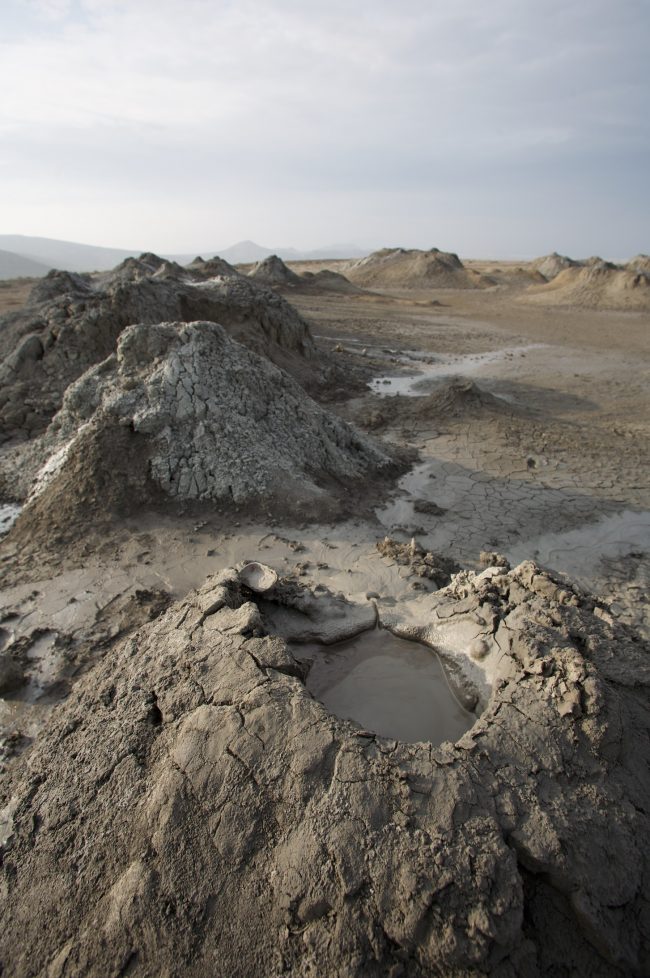
A mud volcano is what caused the explosion near an oil field in the Caspian Sea off Azerbaijan on Sunday (July 4, 2021). That’s according to a report by an Azerbaijani press agency. It happened on Dashly Island, also known as Ignatiy Stone Island, a volcanic island. The last recorded eruption on this island was in 1945. A famous Roman naturalist, Pliny the Elder, described a mud volcano in the year 77 AD. They are still a poorly understood natural phenomenon. What are mud volcanoes?
The July 4 mud volcano happened near oil industry installations in the sea. Some speculated at first that the explosion might be centered near an oil rig. In fact, the closest video of the Dashly mud volcano was captured from an oil platform. This is no coincidence. Mud volcanoes and the oil industry go hand-in-hand. These unique geologic features are found near oil deposits and serve as an indicator for where these valuable natural resources lie.
Why? Because they’re driven in part by natural gas.
Are mud volcanoes true volcanoes?
Mud volcanoes aren’t true volcanoes in the same sense as igneous volcanoes. Most volcanoes we hear about are driven by molten rock from below, called magma.
Instead, mud volcanoes are driven by hot water and natural gas. They tend to occur where layers of water-saturated clay rocks in Earth’s interior are under pressure from layers above. Pressure from nearby gas can drive this mud upward from deep within the Earth up toward the surface. The force of the gas can cause rocks and mud to shoot outward in an eruption, along with methane and carbon dioxide.
Most mud volcanoes are small, just a few inches to several feet (a meter or so) high. You might have seen such mud volcanoes at Yellowstone National Park, where they’re called mudpots.
But some larger mud volcanoes can rise over 300 feet (100 meters) above the surface. Mud volcanoes found in water may never produce enough material to rise above the water level, while others create islands around the volcanic activity. Dashly Island is one of these.
And sometimes, a large mud volcano erupts so explosively that it spews gas plumes that spontaneously combust, sending up columns of fire into the sky. That’s what we saw happen this week in the Caspian Sea.
This week’s mud volcano in Azerbaijan
Mud volcanoes exist around the world, from Indonesia to Italy and beyond. Even Mars has mud volcanoes. But some of the greatest concentrations of mud volcanoes on Earth exist near Azerbaijan. This country and its coastline along the Caspian are home to nearly 400 mud volcanoes. That’s more than half the total found throughout Earth’s continents.
Both people offshore on oil platforms and those on the boardwalk of the nearby city of Baku, Azerbaijan’s largest city and capital, captured video of the July 4 volcano. The fiery eruption lit up the night sky. Many shared videos on Twitter, some of which you can see below.
WATCH: Large explosion reported near oil platform in the Caspian Sea; officials say it may have been caused by a mud volcano pic.twitter.com/eqwNw110bF
— BNO News (@BNONews) July 4, 2021
The morning light allowed a closer look at the source of the explosion: the mud volcano that created Dashly Island.
EMERCOM video https://t.co/9Bw4rtjnuU pic.twitter.com/TNnrd6YL1J
— Liveuamap (@Liveuamap) July 5, 2021
Places where natural gas seeps from the Earth are often associated with mud volcanoes. Not far from Dashly Island, onshore near the city of Baku, Azerbaijan, there’s a gas seep known as Yanar Dag, or Burning Mountain. It’s a place where fire is burning continuously out of a seam in the Earth. A shepherd accidentally lit the flame in the 1950s, and it’s been burning ever since. Mud volcanoes, found in the area, are another way for the pent-up natural gases to be released from underground.
Mud volcano seen from space
This explosion was detected by the @JPSSProgram #SuomiNPP VIIRS Day/Night Band, which is also sensitive to lights & gas flares on the numerous oil platforms in the #CaspianSea. No obvious lights in the area of the explosion before the July 4 event. #Azerbaijan @CriticalStress_ https://t.co/M3aEHiqqDX pic.twitter.com/c888f7JUzk
— Simon Carn (@simoncarn) July 5, 2021

Bottom line: A mud volcano erupted in spectacular fashion in the Caspian Sea off Azerbaijan on July 4, 2021.











